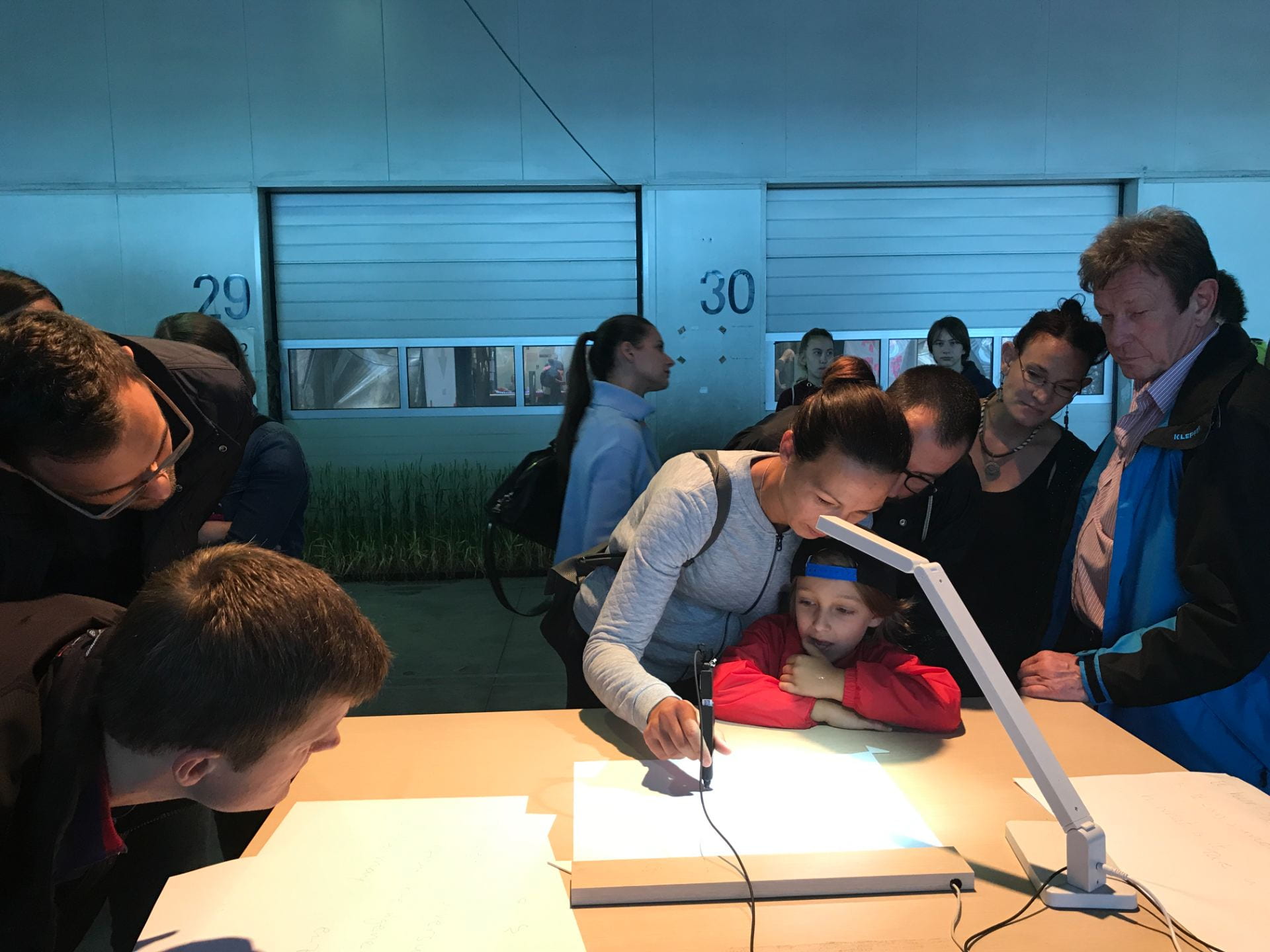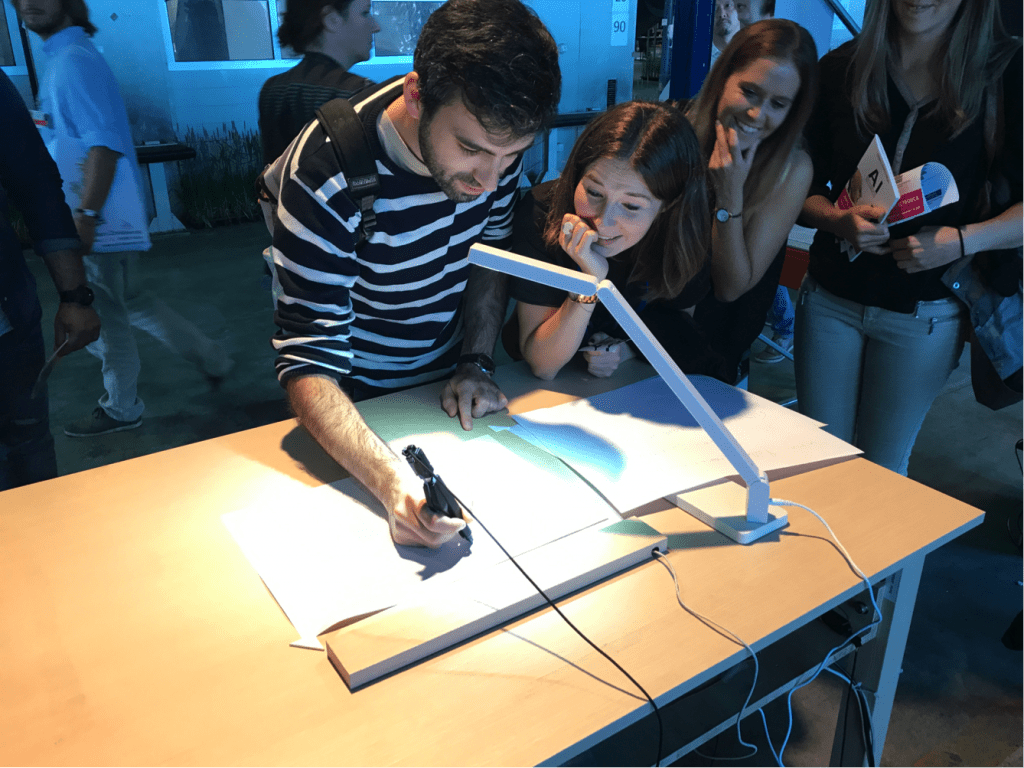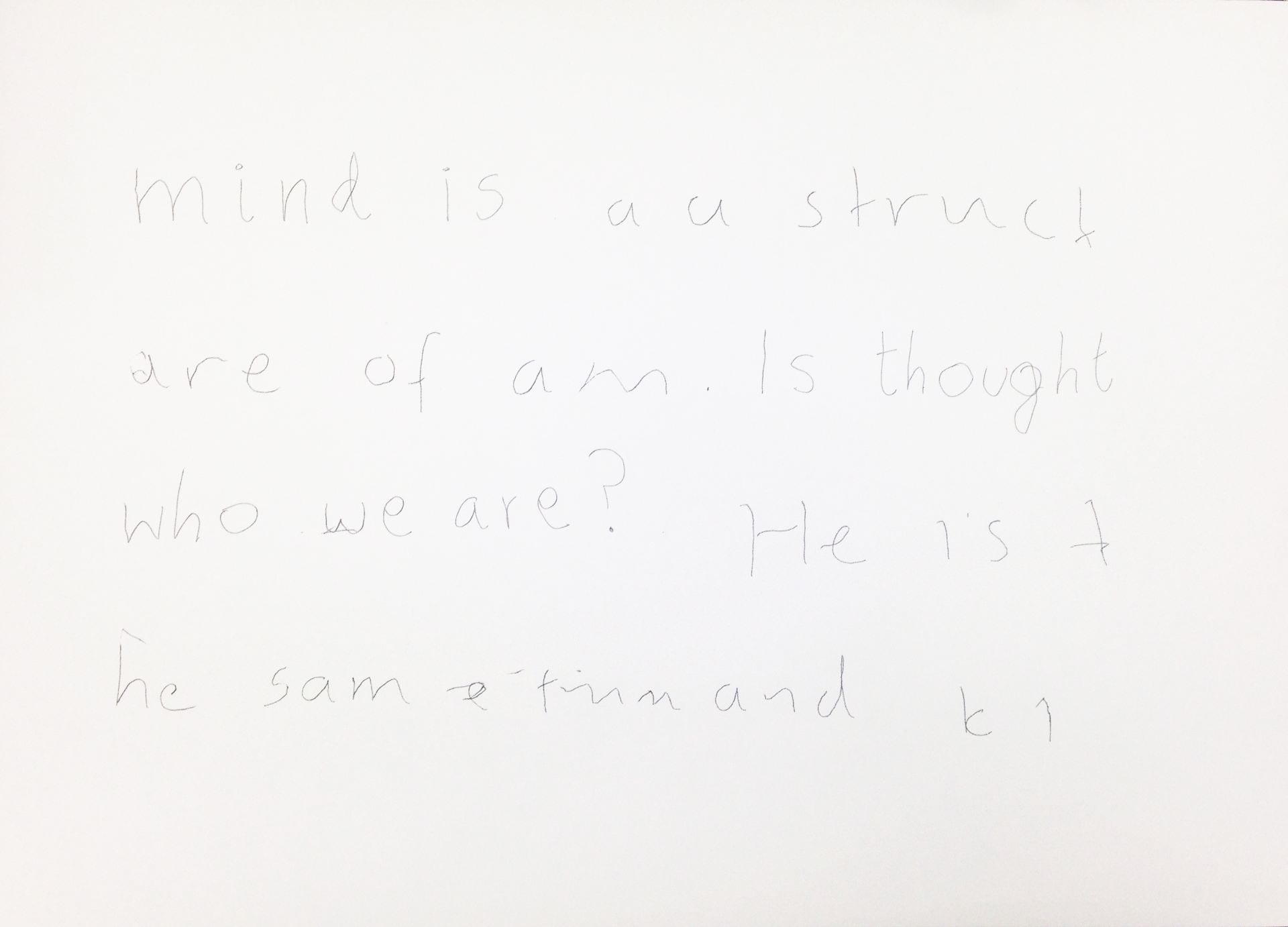Harshit Agrawal (harshit.rnnh@gmail.com), Junichi Yamaoka, and Yasuaki Kakehi
Part human, part human-machine (hand)writing.
We are increasingly offloading a lot of our mental and subjective tasks to machines. In every such interaction, we effectively authorise the machine to momentarily substitute for our mind with its own intelligence, taking decisions and executing (its) plans on our behalf. We achieve an output and feel ownership of it, without explicitly knowing how we achieved it. We have become so accustomed to internalizing this substituted mind, that we do not even acknowledge its authorship in our tasks, let alone reflect on its influence in our everyday thoughts and actions. In this scope, we investigate how this relationship evolves, when the substitution leaks out of just the cognitive domain, and finds its way onto our physical body. For this, we create a handwriting system, where a machine moves our hand on a paper surface to write out its thoughts. How do we feel when our hand ‘mindlessly’ moves on the paper, but eventually writes something meaningful. What happens to our relationship with this other author of our everyday lives as it rises out from behind the surface onto the tips of our hand. How does our sense of ownership of the handwritten outcome vary, if at all? What’s the effect if our own thoughts and actions write all the content, half of it, quarter, none? Offloading how much control to the machine is enough? Also, a lot of entities and their intelligences are involved in writing this piece of paper- the user, the machine, the creator of the program, the various people whose text and thoughts for the part of the dataset- all that eventually makes your hand write something. This already happens in our everyday lives to some extent, often without us explicitly realising. However, once carried through a physical medium, does it make us more aware of the multitude of intelligences we inherit in our everyday, simple tasks?
How do we ultimately extend this experience to rethinking the balance of authorship and authorisation in our lives, especially as machines continue to grow in their intelligence?





Artist Bio
Harshit is an Indian artist working with artificial intelligence and emerging technologies. He uses machines and algorithms and often creates them as an essential part of his art process, embracing becoming the cyborg artist. He often juxtaposes traditional art media, aesthetics and tools along with machines and computation, creating a space to both direct, and be guided by the machine. Harshit was the only Indian artist among 7 international AI art pioneers in one of the world’s first A.I art shows in a contemporary art gallery (Gradient Descent at Nature Morte). His work is part of the permanent exhibition at the largest computer science museum in the world, HNF museum in Germany. He has exhibited work at other premier museums, galleries and art festivals around the world, like the Ars Electronica Festival (Austria), Asia Culture Center (Gwangju Korea), NVIDIA AI Art Gallery (Online), Art-AI Festival (UK), CADAF Contemporary and Digital Art Fair, HI-RESOLUTION Exhibition for New Year’s Ball Drop at Times Square (USA), QUT Art Museum (Australia), Museum of Tomorrow (Brazil), AI Everything Art Show (Dubai) among others. Along with physical exhibitions, Harshit is the first Indian artist on to exhibit his works as NFTs at the premium curated NFT platform Superrare. He graduated from the MIT Media Lab and IIT Guwahati. Harshit has carried out residencies at the Museum of Tomorrow (Brazil), Art Center Nabi (Korea) and X-Lab (Japan). Along with his art practice, he has authored several publications and patents about his work at the intersection of human computer interaction and creative expression.
You must be logged in to post a comment.